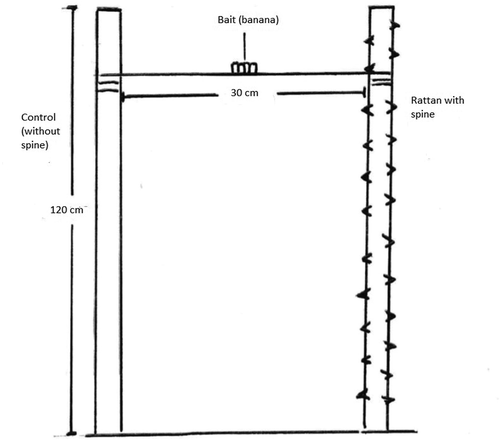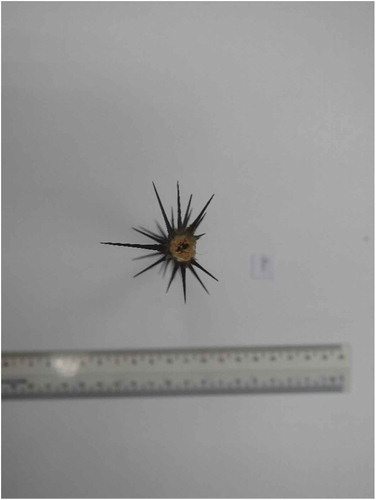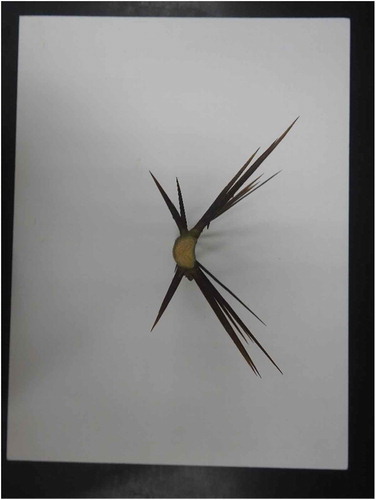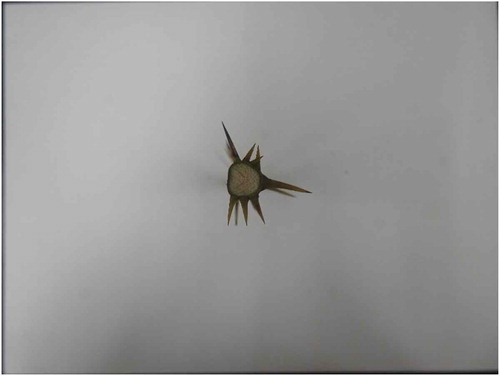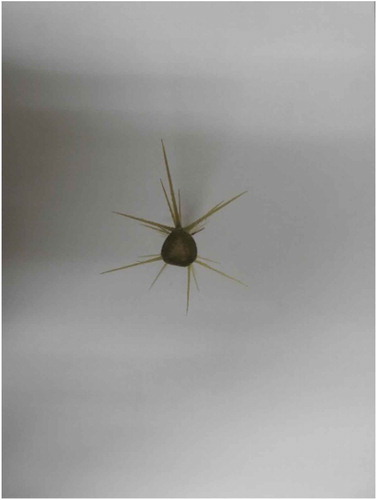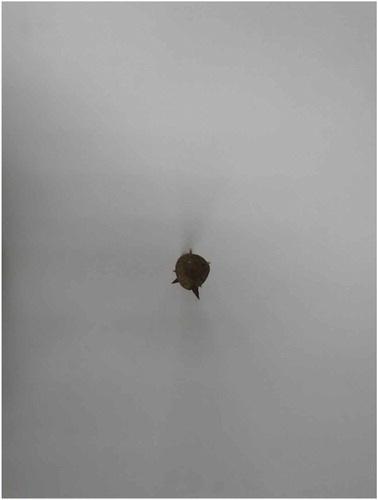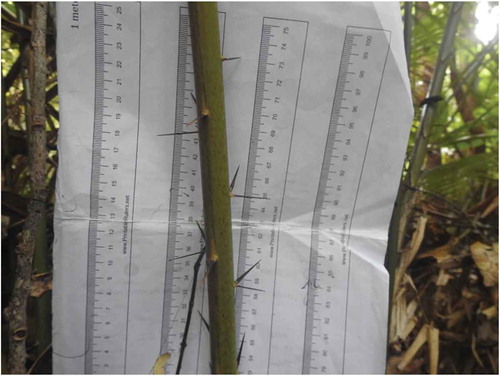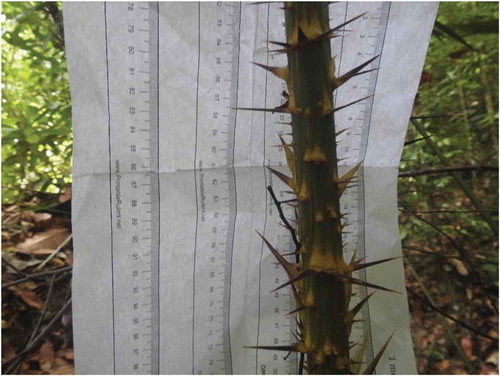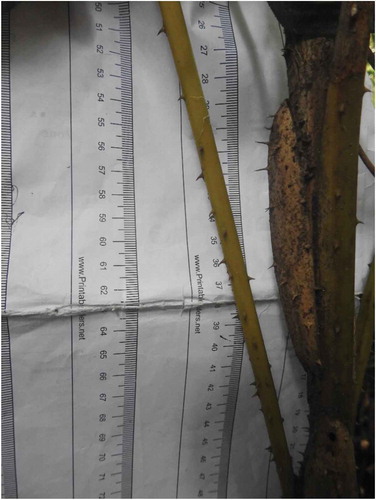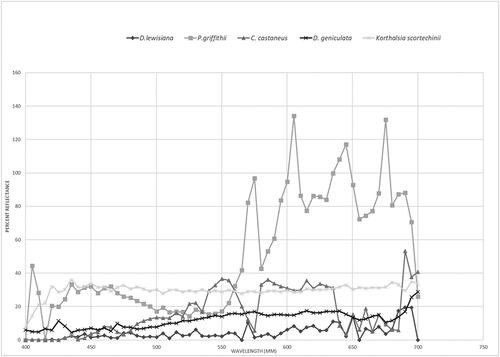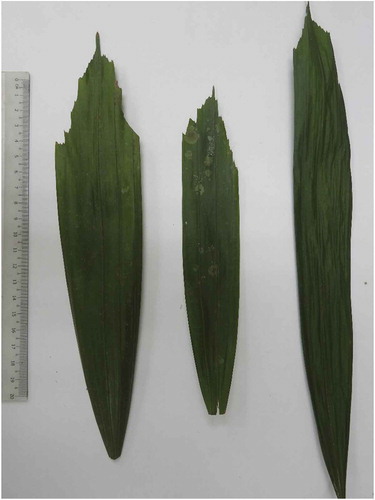Figures & data
Figure 1. The digital weight scale for tensile tests. We removed the original hook at the end of the metal tip.
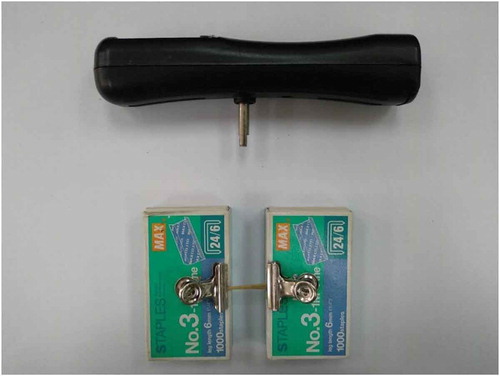
Table 1. The physical characteristics of the rattan spines. Alphabets in superscript denote significant differences for Tukey PostHoc analysis.
Figure 15. Images captured by the camera shows that the Tupaia glis climbing the rattan spines. Figure A and C shows the tree shrew using the spines of C. castaneus as some sort of a climbing foothold, while figure B shows the tree shrew using the control spine. In figure D, the tree shrew used the control spine of P. griffithii to climb up to the bait.



